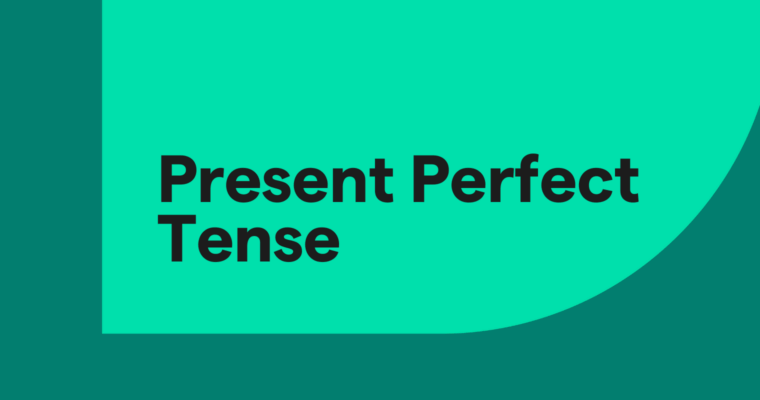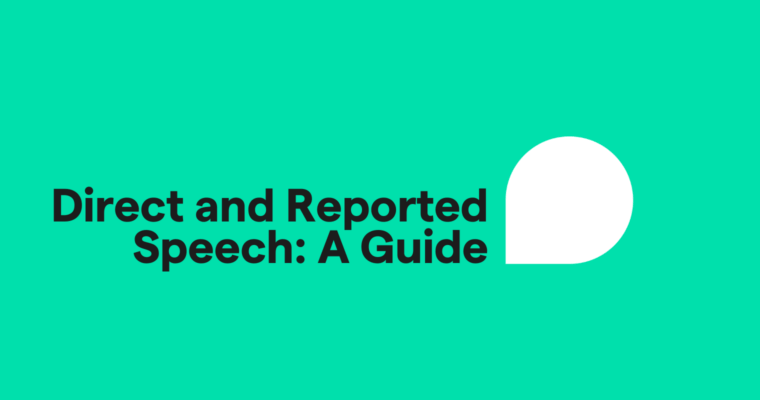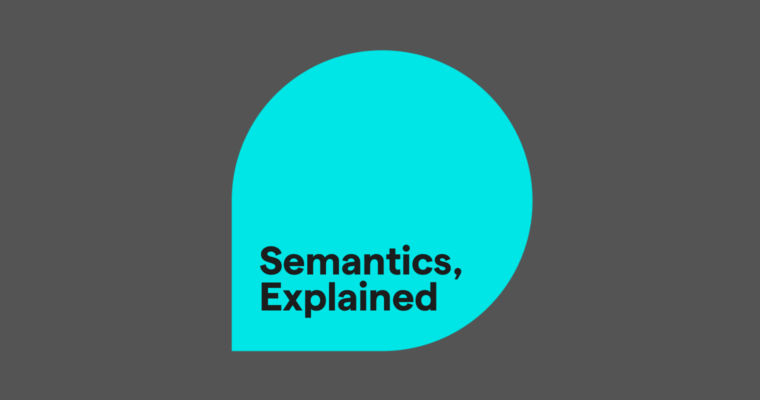
- The present perfect tense is an English verb tense used for past actions that are related to or continue into the present, such as ongoing actions or changes over time.
- You can recognize the present perfect tense by the auxiliary verbs (or helper verbs) have and has. Example: I have gone fishing since I was a child.
- The present perfect tense is commonly used for actions continuing from the past, recently completed actions, repeated actions, or emphasizing changes and achievements. Examples: He has just left. They have grown so much.
- For negatives in the present perfect tense, add not after the auxiliary verb. Example: I have not slept well. For questions, place the auxiliary verb before the subject. Example: Have you seen this movie?
- The present perfect tense cannot be used with specific times. Use it with broader time ranges or general contexts.
Of all the English verb tenses, the present perfect is one of the most complicated because there’s not always a direct translation in other languages. Here, we’ll explain how and when to use the present perfect tense with examples.
Table of contents
What is the present perfect tense?
How to use the present perfect tense
How to use the present perfect continuous tense
6 examples of when to use the present perfect tense
When not to use the present perfect tense
What is the present perfect tense?
The present perfect tense describes an action that happened in the past that is directly related to the present, such as actions that are continuing or that indicate a change over time. It is one of the common verb tenses in English.
Don’t let the name confuse you—even though the word present is there, the present perfect tense deals with actions that happened or started in the past. The present perfect tense is often used interchangeably with the simple past tense, although there are some unique situations in which you can only use one or the other, which we’ll explain below.
How to use the present perfect tense
In the present perfect tense, the main verbs always use the auxiliary verbs (helper verbs) has or have. The main verb takes a participle form, specifically the past participle. The past participle is often the same form as the simple past form of the verb unless it’s an irregular verb with a unique past participle form.
Only the auxiliary verbs are conjugated to fit the subject-verb agreement in the present perfect tense; the past participle of the main verb remains the same no matter what the subject is.
Generally, you use have for all subjects except the singular third-person, which instead uses has.
- First-person: I have come a long way.
- Second person: You have come a long way.
- Third-person plural: They have come a long way.
- Third-person singular: He/she/it has come a long way.
The present perfect tense has specific constructions for standard statements, negatives, and questions, explained below.
The present perfect tense for statements
For general statements (the most common use of the present perfect), use have or has plus the past participle form of the main verb.
The present perfect formula for statements is: [have/has] + [past participle]
The present perfect tense for negatives
To use the present perfect tense in the negative, simply add the negative word (like not or never) after the auxiliary verb but before the past participle.
The present perfect formula for negatives is: [have/has] + [negative] + [past participle]
This structure also works for neither/nor sentences.
Note that it’s clearer to avoid subject contractions when using the present perfect tense with the negative, at least in American English.
The present perfect tense for questions
When asking a question in the present perfect tense, the auxiliary verb comes first, followed by the subject, and then the past participle of the main verb. This follows a similar structure to questions, where the auxiliary verb also comes before the subject.
The present perfect formula for questions is: [have/has] + [subject] + [past participle]
How to use the present perfect tense with adverbs
Although you can still use adverbs after the verb (as you usually do) with the present perfect tense, you can also place the adverb between the auxiliary verb and the past participle.
The present perfect formula for adverbs is: [have/has] + [adverb] + [past participle]
Be careful, though. Certain adverbs—especially yet and just—have special rules for where they’re placed. Moreover, because these adverbs relate to time, they’re often used with the present perfect tense.
The adverb yet, used often with a negative or in questions, almost always comes at the end of a sentence or clause.
Conversely, the adverb just is always placed between the auxiliary verb and the past participle.
How to use the present perfect tense in the passive voice
When discussing writing, we often talk about the active vs. passive voice. Although we recommend using the active voice as much as possible, sometimes the passive voice is unavoidable.
To use the present perfect tense in the passive voice, use been (the past participle of the verb be) before the past participle of the main verb.
The formula for using the present perfect in the passive voice is: [have/has] + [been] + [past participle]
How to use the present perfect continuous tense
You can also combine the present perfect tense with the present continuous tense to show an ongoing action that started in the past and continues to the present. This hybrid tense is called the present perfect continuous tense. The structure is similar to using the present perfect tense in the passive voice, except that the main verb uses the present participle instead of the past participle.
The formula for present perfect continuous tense is: [have/has] + [been] + [present participle]
Like all continuous tenses, the present perfect continuous tense can not be used with stative verbs that describe a subject’s state or feeling like want, need, love, or hate.
6 examples of when to use the present perfect tense
Knowing when to use the present perfect tense is an important part of English grammar, but it can be confusing even for primary English speakers. Below, we explain the six main uses of the present perfect tense with examples.
1 An ongoing action that started in the past but has not yet been completed
This is the primary usage of the present perfect tense, which demonstrates the relationship between an action started in the past and its effects on the present.
You can also use the present perfect continuous tense for this situation, as long as the action has not been completed yet (and it’s not a stative verb). The difference between the present perfect tense and the present perfect continuous tense, in this case, is emphasis:
- The present perfect tense emphasizes the effects or consequences of the action.
- The present perfect continuous tense emphasizes the action itself or the length of time.
For example, if you want to plainly say where you live, use the present perfect tense.
If you want to emphasize how long you’ve been living in a place, use the present perfect continuous tense.
What about an action started in the past that has already been completed? For that, you can use the simple past.
2 An action completed multiple times in the past that’s likely to happen again in the future
When the same action has happened a few times already, you can use the present perfect tense if the action will likely happen again in the future. If the action probably won’t happen again, you can use the simple past tense.
3 An action that was completed very recently (often used with just or now)
If an action was only completed very recently, you can describe it in the present perfect tense. Even though the action happened in the past, it was recent enough to be directly connected to the present. These cases usually use adverbs like just or now to show that the action happened not long ago.
4 A change over time
The present perfect tense is often used to emphasize a change that happened over an extended period of time.
5 An uncompleted action that is expected to be finished (in the negative)
If an action started in the past but was not completed, you can describe it in the present perfect tense if it’s likely to be completed in the future. This situation uses the negative form to show that the action is still unfinished and often uses the adverb yet.
6 To add significance to a completed action
Use the present perfect tense to make any past action sound more important. The present perfect tense is often used with great achievements or accomplishments and dramatic or rare events. This makes it appropriate for newsworthy events or significant life experiences.
When not to use the present perfect tense
Don’t use the present perfect tense with a specific time. Often, the difference between the present perfect tense and the simple past tense is a matter of emphasis on whether or not the action is truly finished.
This might be confusing, however, because you can use the present perfect tense with a broad time period. The present perfect tense is only incorrect if used with one specific time. Using the present perfect tense with a general time range is perfectly acceptable.
Present perfect tense FAQs
What is the present perfect tense used for?
The present perfect tense is an English verb tense used to describe a past action that is related to the present.
How does the present perfect tense work?
The present perfect tense uses the auxiliary verb has or have and the past participle form of the main verb. For example, if you want to use go in the present perfect tense, you say, “I have gone.”
When is the present perfect tense used?
The present perfect tense is commonly used with events that started in the past and continue into the present. However, it has a few other uses too, including events that happened very recently in the past.
What are the rules for using the present perfect tense?
- Structure: Use the auxiliary verbs have or has with the past participle of the main verb (Example: She has finished her homework.).
- Subject-verb agreement: Use have for first-person, second-person, and plural third-person subjects (Examples: I have seen. They have gone.). Use has for singular third-person subjects (Example: He has read.).
- Negative form: Add not after the auxiliary verb (Example: I have not slept well.). Contractions like haven’t or hasn’t are also common.
- Questions: Place the auxiliary verb before the subject (Example: Have you finished the report?).
- Adverbs: Words like just, already, and yet are often used with the present perfect tense, typically placed between the auxiliary verb and the past participle (Example: I have just arrived.).
- Time: Don’t use the present perfect tense with a specific time. Instead, use it with broader time ranges or general contexts (Example: I have gone for a run every morning this month.).





